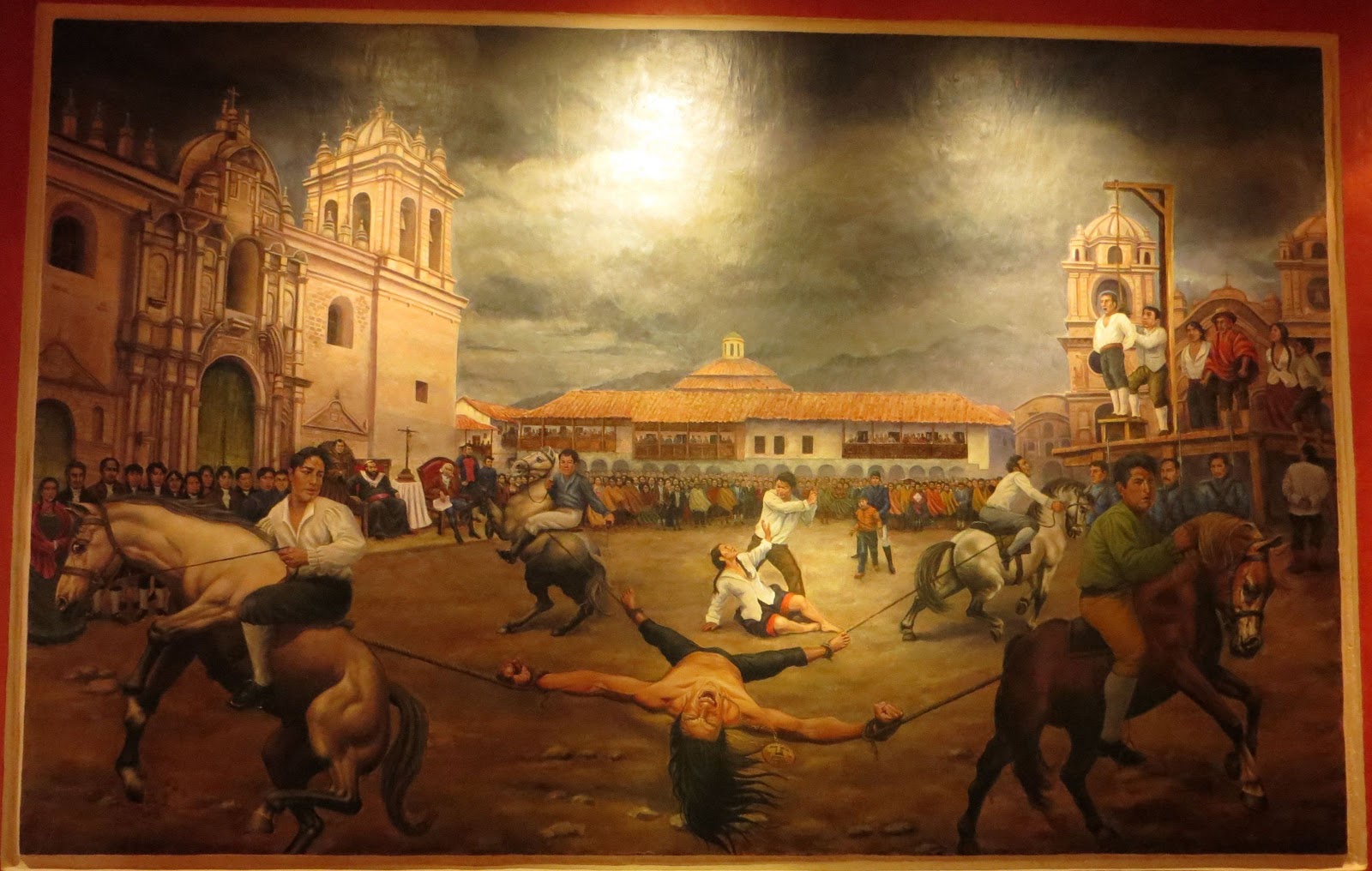On May 21, 1781, the royalists executed the Inca José Gabriel Condorcanqui; known as Tupac Amaru. His great uprising began on November 4, 1780 in Tungasuca, south of Cusco, with the support of his wife, Micaela Bastidas, several caciques and thousands of indigenous people. Shortly after, Túpac Amaru II and Micaela Bastidas were captured, tried, and sentenced to death. The sentence was served on May 18, 1781 in the Plaza de Armas of Cusco. Túpac Amaru II was forced to witness the hanging of his eldest son, Hipólito Condorcanqui Bastidas, and other relatives and friends who participated in the rebellion. He also saw the death of his wife. Micaela was strangled in the vile club and finished off with kicks in the belly. They tried to dismember Túpac Amaru with four horses, but he resisted this torment. Finally he was beheaded. Painting at a Museum in Cusco, Peru.
Forside 1780 On May 21, 1781, the royalists executed the Inca José Gabriel Condorcanqui; known as Tupac Amaru. His great uprising began on November 4, 1780 in Tungasuca, south of Cusco, with the support of his wife, Micaela Bastidas, several caciques and thousands of indigenous people. Shortly after, Túpac Amaru II and Micaela Bastidas were captured, tried, and sentenced to death. The sentence was served on May 18, 1781 in the Plaza de Armas of Cusco. Túpac Amaru II was forced to witness the hanging of his eldest son, Hipólito Condorcanqui Bastidas, and other relatives and friends who participated in the rebellion. He also saw the death of his wife. Micaela was strangled in the vile club and finished off with kicks in the belly. They tried to dismember Túpac Amaru with four horses, but he resisted this torment. Finally he was beheaded. Painting at a Museum in Cusco, Peru.
On May 21, 1781, the royalists executed the Inca José Gabriel Condorcanqui; known as Tupac Amaru. His great uprising began on November 4, 1780 in Tungasuca, south of Cusco, with the support of his wife, Micaela Bastidas, several caciques and thousands of indigenous people. Shortly after, Túpac Amaru II and Micaela Bastidas were captured, tried, and sentenced to death. The sentence was served on May 18, 1781 in the Plaza de Armas of Cusco. Túpac Amaru II was forced to witness the hanging of his eldest son, Hipólito Condorcanqui Bastidas, and other relatives and friends who participated in the rebellion. He also saw the death of his wife. Micaela was strangled in the vile club and finished off with kicks in the belly. They tried to dismember Túpac Amaru with four horses, but he resisted this torment. Finally he was beheaded. Painting at a Museum in Cusco, Peru.


























